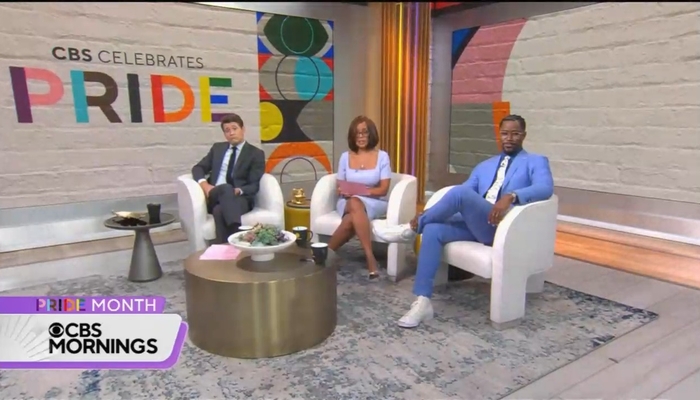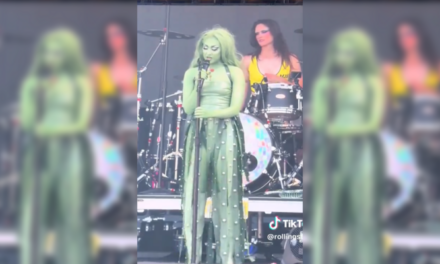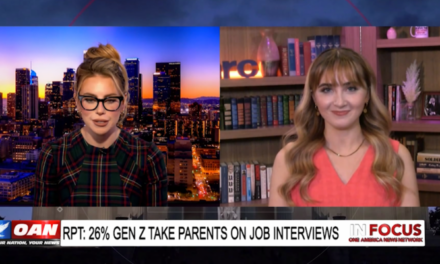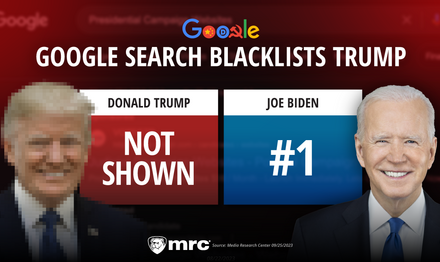We support our Publishers and Content Creators. You can view this story on their website by CLICKING HERE.

The hosts over at CBS Mornings couldn’t seem to decide how they felt about political flags. During the second hour of Thursday morning’s episode, they devoted a segment to an interview with Lynn Segerblom, one of the original creators of the rainbow Pride flag. However, only a few weeks prior, they denounced the Appeal to Heaven flag that flew outside of Supreme Court Justice Samuel Alito’s New Jersey home.
In a dutiful demonstration of their alliance with the LGBTQ+ movement, co-host Gayle King introduced the interview with an apologetic admittance of the fact that no one in the studio was aware of the rainbow flag’s origin:
While the flag is now a celebrated symbol for the LGBTQ+ community, the full story behind its creation has remained largely untold. You know what, I asked everybody in this studio–there’s a lot of smart people here, including Klaus who’s shooting me right now–none of us know the origin. Nobody knew the answer to this question. That’s why we’re very glad that Elise Preston sat down with one of the flag’s creators who shared her personal story, reflected on how far this symbol has come.
CBS correspondent Elise Preston interviewed Segerblom who described the process of creating the flag and explained her reason for specifically choosing the rainbow which she said was “a beautiful phenomenon of light and color and nature? It’s all the colors. It’s the full spectrum.”
Yes, that phenomenon was a gift from God to humanity that had been subverted by a movement that promotes pedophilia and perverted indoctrination of children.
Segerblom mentioned the fact that credit for the flag’s creation had historically been attributed to Gilbert Baker, which prompted Preston to hilariously suggest that the “lack of inclusion of you had […] to do with your gender.” The activist pushed back on that, pointing out that even the male contributors received no credit, including James McNamara who taught Gilbert how to sew.
The hosts made an ironically weak show of enthusiasm with King densely commenting, “I like what she said, ‘It represents the full spectrum.’ That’s a good thing.” For his part, co-host Nate Burleson insipidly contributed, “Yeah, good history lesson.” Tony Dokoupil said nothing other than a couple mutters in submissive agreement.
Just last month, King was clutching her pearls over Alito’s flag and boosting calls for his recusal from critical cases: “This morning, Supreme Court Justice Samuel Alito faces new calls to remove himself from cases tied to the former president and the assault on the Capitol. The New York Times reports a second flag used by January 6th protestors was seen flying at Alito’s vacation home.”
Yet, the juxtaposition of this episode and the one concerning Alito a few weeks ago was clear. Both covered the topic of flags but the one that represented perversion was celebrated while the other was decried as an insurrectionist symbol of Christian nationalism.
The transcript is below. Click “expand” to read:
CBS Mornings
6/20/2024
09:48:18 AM EST
GAYLE KING: This morning, in honor of Pride Month, we’re taking a look at the history and evolution of the rainbow Pride flag that we’ve all come to know. While the flag is now a celebrated symbol for the LGBTQ+ community, the full story behind its creation has remained largely untold.
You know what, I asked everybody in this studio–there’s a lot of smart people here, including Klaus who’s shooting me right now–none of us know the origin. Nobody knew the answer to this question. That’s why we’re very glad that Elise Preston sat down with one of the flag’s creators who shared her personal story, reflected on how far this symbol has come.
[Cuts to video]
ELISE PRESTON: For Lynn Segerblom, most mornings look like this…
LYNN SEGERBLOM: These are rocks too…
PRESTON: …each day treated like a blank canvas, and always starting off with a splash of color.
SEGERBLOM: I want yellow.
PRESTON: Fitting for a woman who used to go by the nickname “Rainbow”.
SEGERBLOM: So, I had a driver’s license that said “Fairy Argyle Rainbow” on it since 1976.
PRESTON: A simple fusion of colors transformed into something more powerful when Segerblom and friends grafted a piece of rainbow artwork that brought a storm of change to California in the summer of 1978.
SEGERBLOM: Well, I did work at the community center. I rented a room there to do my dyes in. It was only the second time there was a Gay Freedom Day parade in San Francisco. And they’re like, “Well, we got permission to use the flagpoles at civic center. Do you guys want to go down there and look at them, think of what we could do with the flagpoles?” So we did, we went down. And of course, it gave me ideas.
PRESTON: The idea, she says, was a striped rainbow flag that soon became the symbol of the gay rights movement.
You could’ve created anything. Why those colors?
SEGERBLOM: I really love color. And what is a rainbow besides a beautiful phenomenon of light and color and nature? It’s all the colors. It’s the full spectrum.
PRESTON: But credit for the flag’s creation has historically gone to Gilbert Baker.
SEGERBLOM: Gilbert, myself–this is the stars and stripe flag.
PRESTON: A late activist who Segerblom says helped sew and promote the flags. The problem, she says, is that he was just one of several contributors who should be collectively recognized.
How did it feel to not get that credit?
SEGERBLOM: At the time, I didn’t know I wasn’t getting the credit, you know? And this was a labor of love for all of us. Nobody got paid. You’re there ‘cause you want to be.
PRESTON: Yeah. Do you feel that the lack of inclusion of you had anything to do with your gender?
SEGERBLOM: Mmm, maybe, but–James McNamara got no credit and he’s the one that taught Gilbert Baker how to sew. He passed away from AIDS in the ’90s.
PRESTON: I’m so sorry to hear about your friend.
SEGERBLOM: It’s hard to go through because it’s your friends, it’s your roommates, it’s your hairdresser, it’s your–people that you meet on a Friday. And then they’re sick and they’re not gonna get any better. And then they’re gone.
PRESTON: That hurt turned into hope as rainbow flags helped wave in a new chapter in history with additional colors and stripes added over the years to promote the diversity and inclusivity of the LGBTQ+ community.
TARA RUSSELL SLAVIN: We have a number of flags to represent different elements of our community.
PRESTON: The history of the gay rights movement is honored here by Tara Russell Slavin’s team at the Los Angeles LGBT Center.
SLAVIN: The overall sense, right, was that people were fighting for basic, just basic equality. It was a time of people often living in the closet, not being able to be openly out. And for those who did, they–it took a lot of courage.
PRESTON: When the flag was created in 1978, how did it galvanize the movement?
SLAVIN: I think it gave people a symbol or imagery to identify with the movement. And I think that is important when you’re trying to create visibility, when you’re trying to create acceptance.
PRESTON: Yet the symbol made out of love has been met with hate. Vlad reports during Pride Month last year alone, there were at least 145 incidents of anti-LGBTQ hate documented nationwide. But at pride parades being held around the world this month, the rainbow flags still wave strong.
SEGERBLOM: I love when I’m out and about and I see rainbow flags. I love it. I’m like, yes, please, do it more.
PRESTON: An ode to the power some paint and a vision can have, even 46 years later. For CBS Mornings, Elise Preston in Los Angeles.
[Cuts back to live]
KING: And now we know. I think it’s such a beautiful symbol too.
NATE BURLESON: Yeah.
KING: I like what she said, “It represents the full spectrum.” That’s a good thing.
BURLESON: Yeah, good history lesson.
TONY DOKOUPIL: Yeah, yeah.
KING: I think so too!
(…)

 Conservative
Conservative  Search
Search Trending
Trending Current News
Current News 





